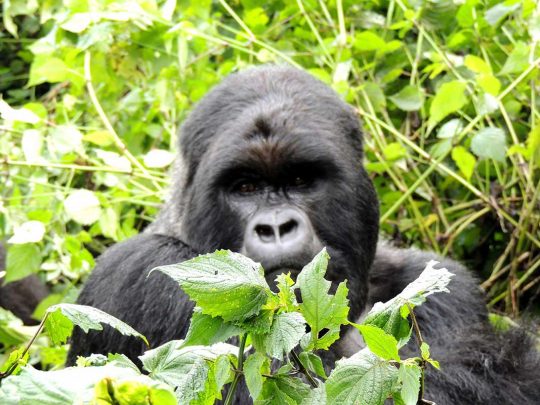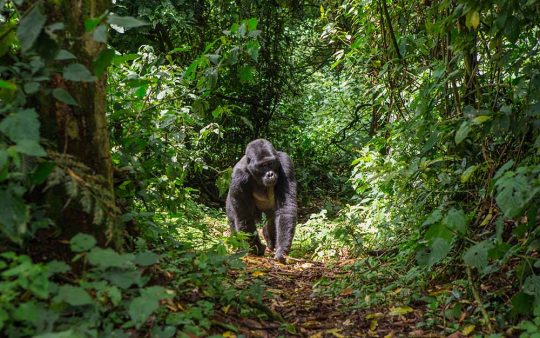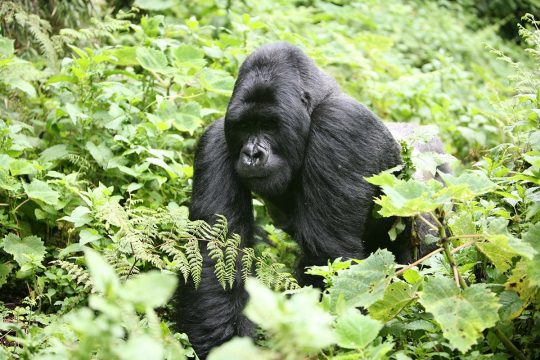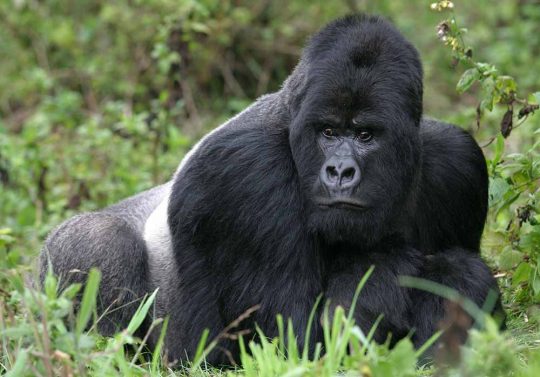Volcanoese National Park
Are you thinking to go visit Volcanoese?
Talk to our experts about the perfect planning for your holiday.
Error: Contact form not found.
- About Volcanoese
- Interesting facts about Volcanoese
- Best Time to Visit Volcanoese
- Things to see in Volcanoese
- How to get to Volcanoese
- Where to Stay in Volcanoese
- Weather & Climate
Welcome to Volcanoese National Park, situated in the far northwest of Rwanda. It is a home to the endangered mountain gorilla.
About Rwanda
Rwanda is known as the “Land of a thousand hills”, and with its stunning views and warm, friendly people offer unique experiences for the travellers. The country is blessed with extraordinary biodiversity, as incredible wildlife living throughout its volcanoes, montane rainforest and sweeping plains. Rwanda went through very turbulent history, from being a colony to more recent civil war between opposite tribes. But today, this is the second easiest place to do business in Africa by the World Bank and has been awarded for its leadership in tourism and economic competitiveness by the World Travel and Tourism Council (WTTC) and the World Economic Forum respectively.
About Volcanoese National Park
Situated in the far northwest of Rwanda, Volcanoes National Park protects the steep slopes of this magnificent mountain range, which is a home to the endangered mountain gorilla and a rich mosaic of montane ecosystems. This variety of habitats makes it a sanctuary for many other wildlife species as well, including two habituated golden monkey troops. While in pursuit for gorillas you might also spot the park’s elusive forest elephants, buffalos, bush pigs, forest hogs, and black-fronted duikers.
- Volcanoes National Park is the oldest national park in Africa
- Volcanoes is the only park where you can find mountain gorillas in Rwanda
- Volcanoes national park is home to five of the eight Virunga Volcanoes. (Karisimbi, Bisoke, Muhabura, Gahinga and Sabyinyo)
- is the smallest park in Rwanda with just 160km2
- The book “Gorillas in The Mist” by Dain Fossey was written based on gorillas in this park.
- The Park has been Closed on more than two occasions in the last 25 years due to several security issues.
The best season to visit Volcanoes Park is during the dry months of June through September where the maximum temperatures hover between 25C and 27C (77F to 81F) degrees during the day and fall to between 13.5C and 15C (56F to 59F) at night. In fact, your tour consultant at AfricanMecca Safaris is likely to recommend that you pack some warm clothing, since the weather in the mountains can be quite cool in the evenings and early mornings. The second, shorter dry season runs from the middle of December through to the middle of February.
Many active holidaymakers who want to visit Volcanoes National Park to experience gorilla primate trekking in Rwanda pick the drier months, since trails are less muddy and there is less likelihood of getting drenched by an impromptu shower. However, those looking for the best chance of seeing specific mountain gorilla families of the Virungas might want to plan your primate trip in one of the wet seasons. During the rains, the climate at the higher elevations is cooler and the gorillas prefer to remain on the lower slopes; here, it is easier to track and spot them.
- Mountain gorilla trekking
- Golden monkey tracking
- The Volcano hike
- Exploring the Musanze Caves
- Experience Rwanda’s culture at Iby’Iwacu Village/ Gorilla Guardians Village
Most visitors arrive in Rwanda via Kigali International Airport (KGL), which is about 10km/6mi from the capital, Kigali.
There are no scheduled domestic flights to Volcanoes National Park. Most people opt for a tour around the country with a 4×4 and driver-guide.
Volcanoes NP is located in the north of the country 130km/81mi from Kigali, 70km/43mi from Gisenyi and 12km/7mi from Musanze.
All participants in any activity at the park must report to the park headquarters in Kinigi by 7am. Therefore, it is recommended to stay close to the park, or in nearby Musanze.
Akagera Aviation offers charter helicopter transfers to anywhere in the country, including Volcanoes National Park.
Volcanoes NP receives a steady stream of rain and mist. Combined with the high altitude, this means that the climate is wet and cold. Temperatures don’t change much throughout the year. Temperatures are around 16°C/61°F during the day. At night, it cools off to about 6°C/43°F. The park’s wide range of altitudes also means a range of climatic conditions. The temperature drops by about 6.5°C for every 1,000m climbed (or 3.5°F per 1,000ft).
Dry season–June to August
It rains a lot throughout the year, but there is a short, drier season from June to August. We recommend that you pack warm, waterproof clothing and good walking shoes for hiking.
June & July – Although it can rain at any time, these are the driest months of the year. With drier trails on offer, it’s an excellent time for hiking. Daytime temperatures average 16°C/61°F, while the mercury hovers around 6°C/43°F at night.
August – Time to pull out your rain jacket. The rains pick up noticeably in August. However, temperatures stay the same.
Wet season–September to May
Rain, rain, rain…there’s plenty of it around at this time of the year. Don’t forget to pack waterproof clothing, sturdy shoes for hiking and warm clothing for the cold, damp conditions.
September – If the rains don’t arrive in August, they will definitely come in September. Temperatures are around 16°C/61°F during the day, depending on altitude. Nights are cold with an average of 6°C/43°F.
October & November – It rains a lot, with October a peak month for rainfall. Temperatures remain the same.
December, January & February – It rains a bit less than in October and November, but the rain can come at any time. Wet-weather gear is still a must.
March & April – These are the wettest months and it can rain for days. Hiking can be difficult as the trails get very slippery. Temperatures don’t really change.
May – Sometime in May, the rain diminishes and there are more sunny days. Daytime temperatures are a bit lower.
If you liked Volcanoese National Park, you might also like Amboseli National Park.
If you liked Volcanoese National Park, please follow us on Instagram for more content like this.
Do you need expert tips on planning for your next safari in Africa?
Share your email here
[mc4wp_form id=”29279″]





